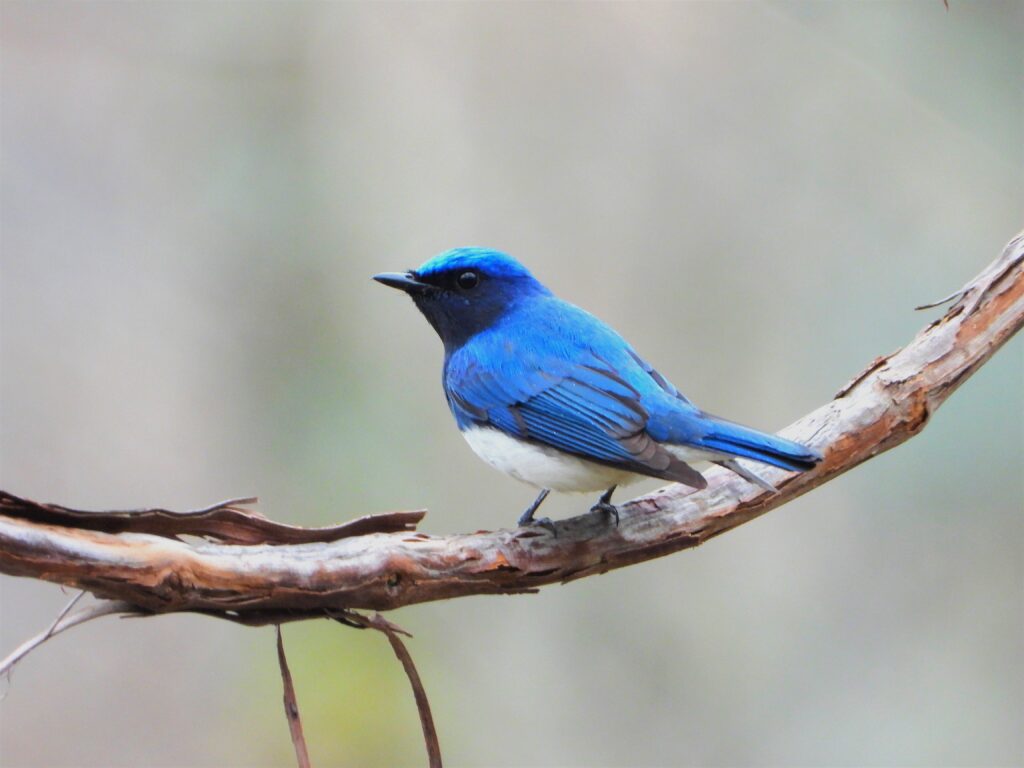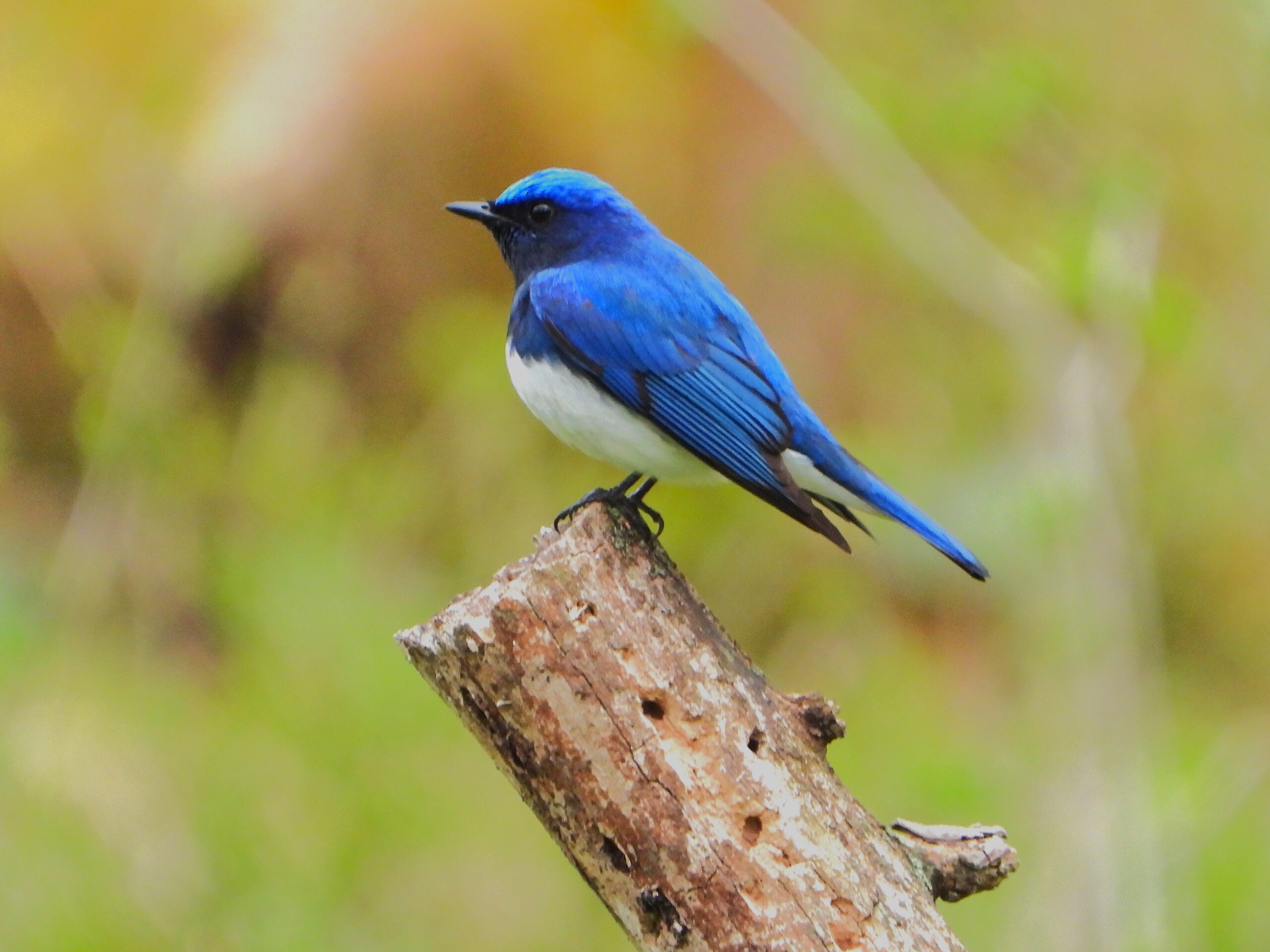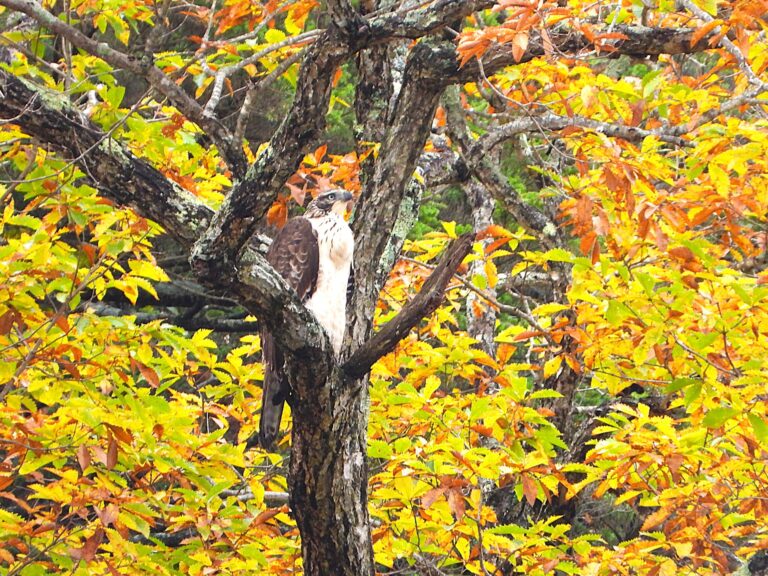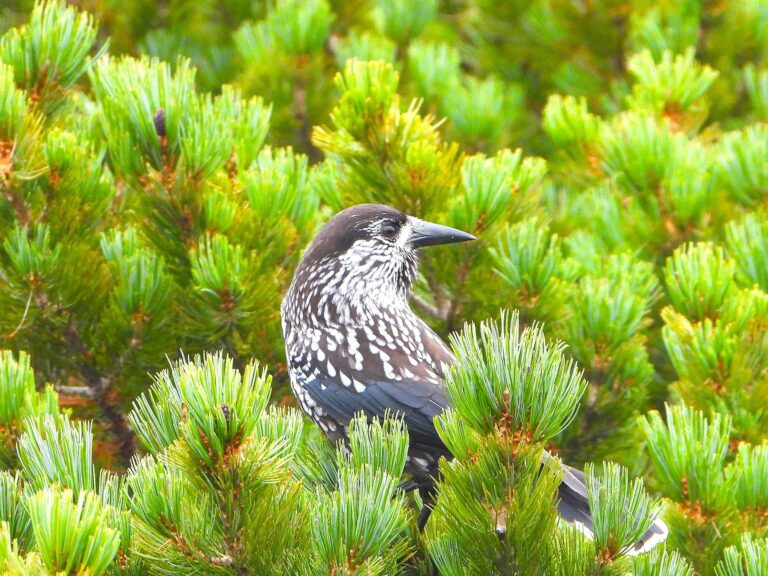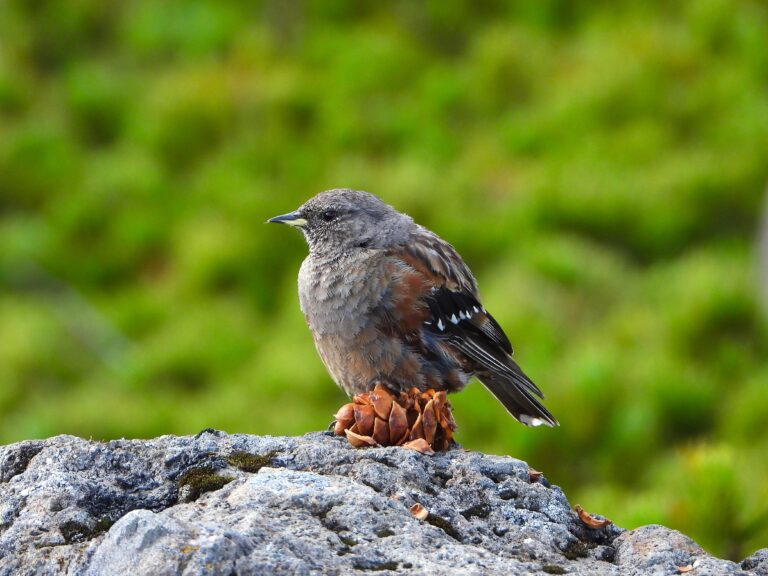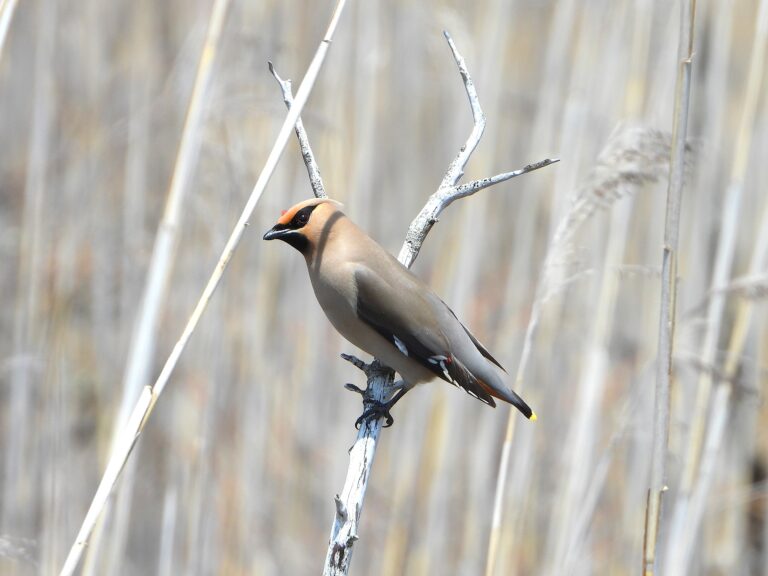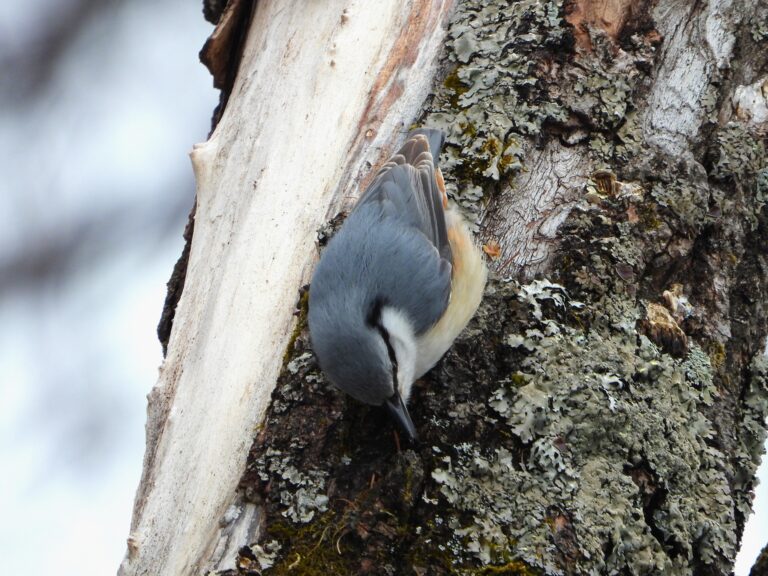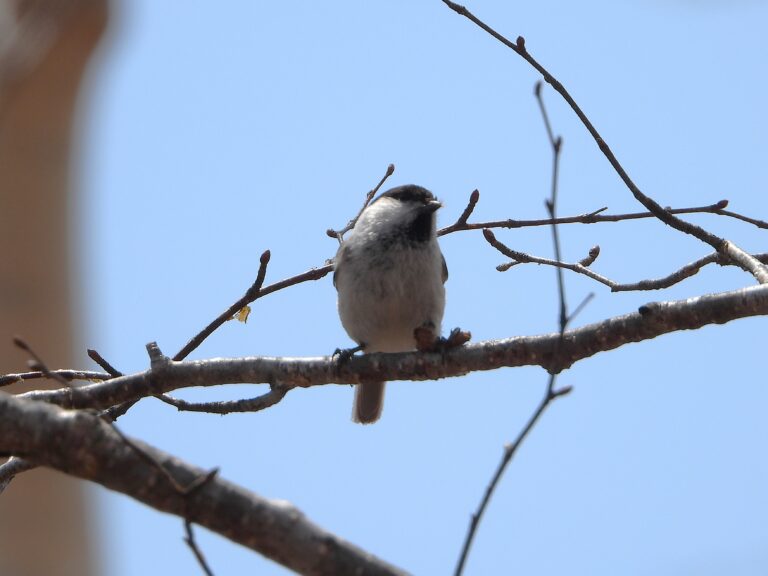Blue-and-White Flycatcher (Cyanoptila cyanomelana) – Wildlife of Japan
Introduction
The Blue-and-White Flycatcher (Ooruri, Cyanoptila cyanomelana) is one of Japan’s most celebrated summer birds. Its striking sapphire-blue plumage and clear, ringing song have made it a symbol of mountain forests and one of the famous “Three Songbirds of Japan.” Every spring it migrates north from Southeast Asia to breed in Japan’s woodlands before returning south in autumn.
Appearance
Males are vivid blue on the head and back, with white underparts and blackish wings and tail, creating a striking contrast. Females are brownish overall with paler underparts and a faint eye ring, much less colorful than males. Adults measure about 16–18 cm in length, with a slim flycatcher build and upright posture.
Habitat
This species breeds in cool, mature forests, particularly those with tall broadleaf or mixed trees near rivers and ravines. In Japan it ranges widely from Hokkaido through Honshu, Shikoku, and Kyushu, but is most common in mid- to high-elevation wooded areas.
Where to Observation
The Blue-and-White Flycatcher can be observed from late April to September, with peak singing in May and June. The best time is early morning, when males sing actively from high branches. Good observation sites include Nikko in Tochigi, the Wild Bird Forest in Karuizawa (Nagano), Mt. Takao in Tokyo, the montane forests of Hakone (Kanagawa), the Kitayama forests of Kyoto, the mountains of Shikoku such as Mt. Tsurugi, and the deciduous woods of southern Hokkaido.
Behavior
Typical of flycatchers, the Ooruri uses a “sit-and-sally” feeding style: it perches quietly, then darts into the air to snatch flying insects before returning to a branch. Males sing prominently from high, exposed perches to establish and defend territories in spring and summer. They are often easier to hear than to see, as they forage high in the canopy.
Diet
The Blue-and-White Flycatcher feeds mainly on insects—flies, beetles, moths, caterpillars—captured in flight or gleaned from foliage. Outside the breeding season, it may also take small berries and fruits when available.
Reproduction
Breeding occurs from May to July. The female builds a neat cup-shaped nest on a tree branch, stump, or ledge. She lays 3–5 pale eggs, incubates them for about two weeks, and both parents feed the chicks until they fledge roughly two weeks after hatching.
Conservation
The species is listed as Least Concern globally, with stable populations across its wide range. In Japan it remains fairly common in suitable habitat, but local declines can occur if mature forests are fragmented or degraded. Conservation of continuous woodland and riparian habitat supports its long-term survival.
Author’s Impression
I often notice Ooruri first by sound rather than sight—a clear, cascading song drifting through the forest. In Nikko, hearing that vivid song echoing from high cedars feels like a reward for an early morning walk. Spotting the flash of deep blue against the dark forest background is always a highlight of spring birding. Their song is distinctive and carries well, so relying on the call is the best way to locate them.
